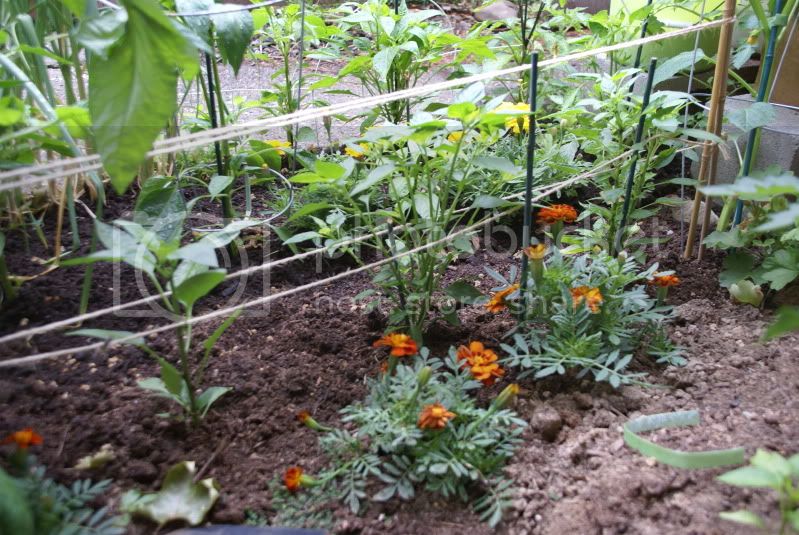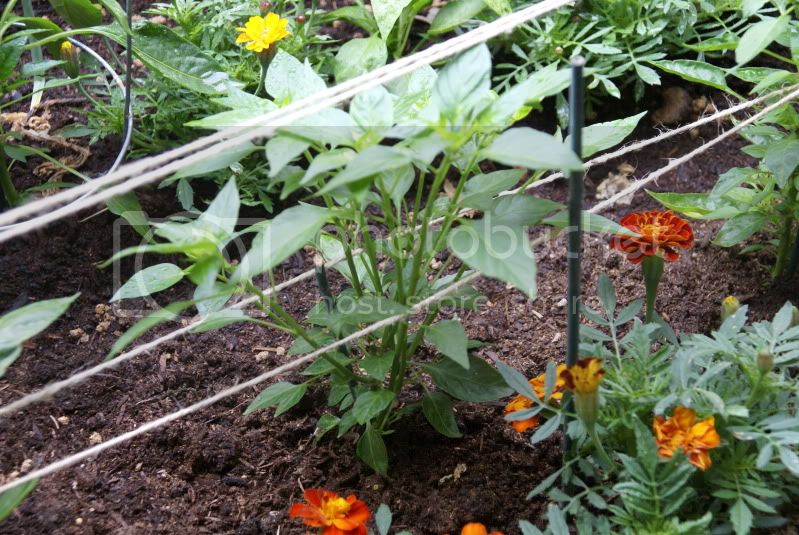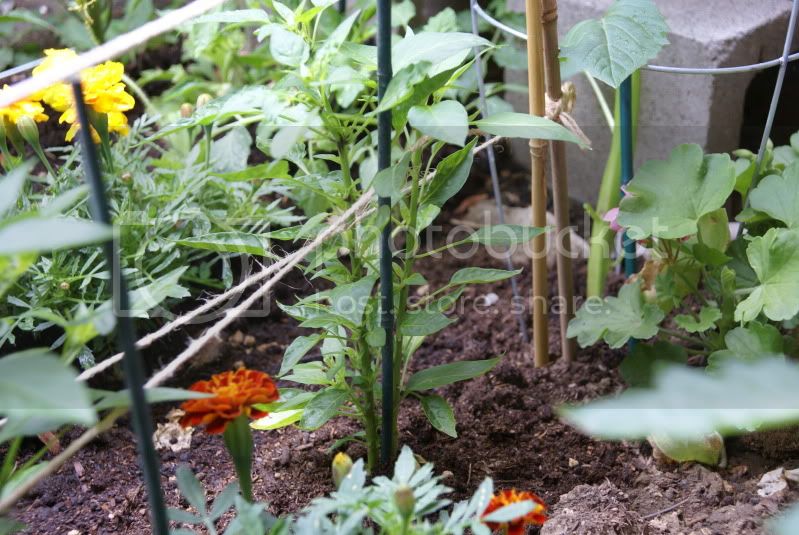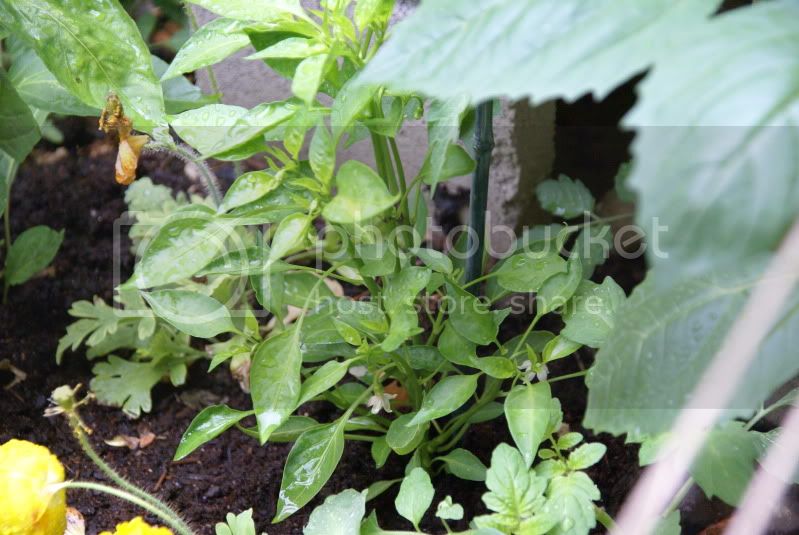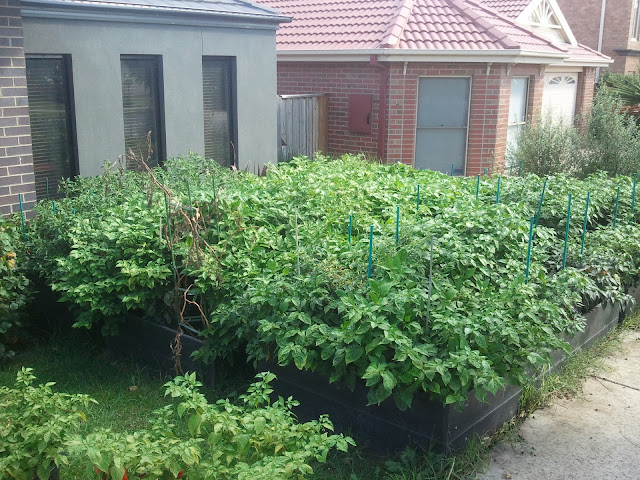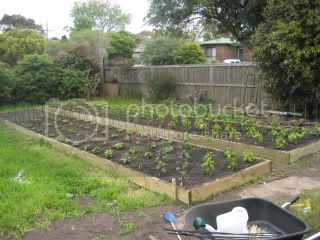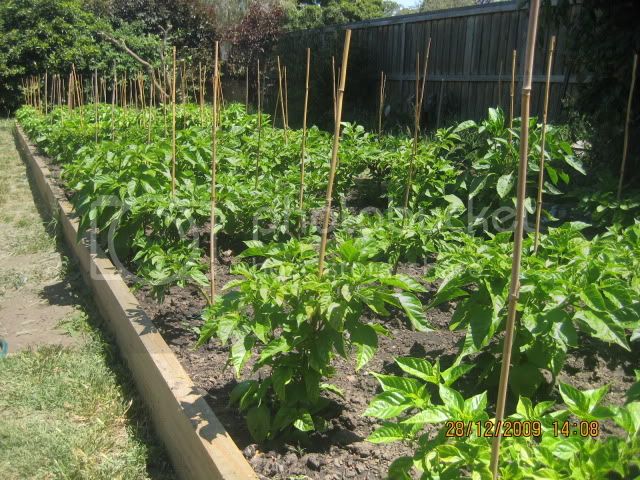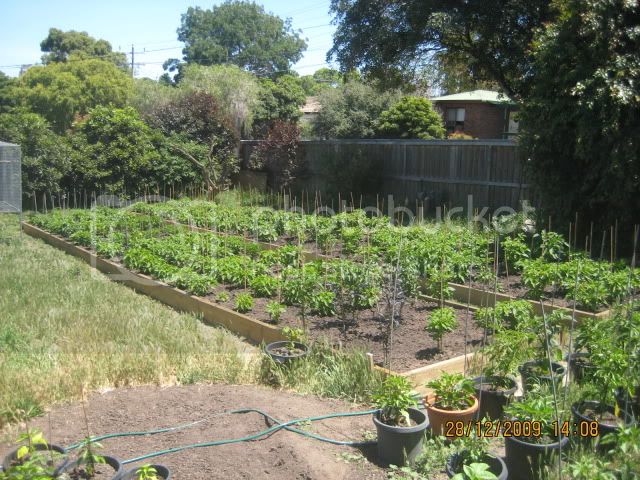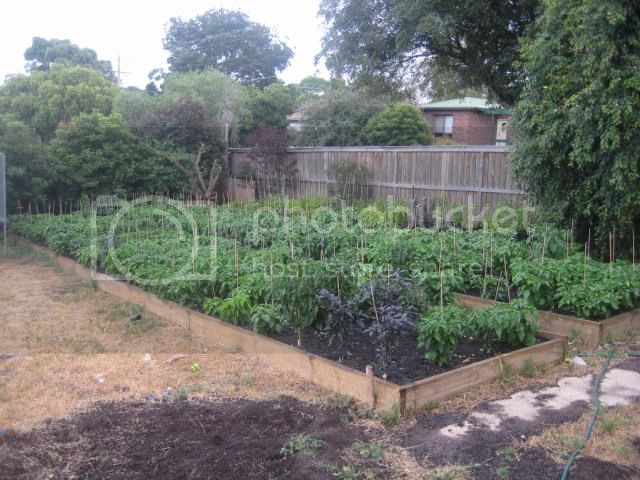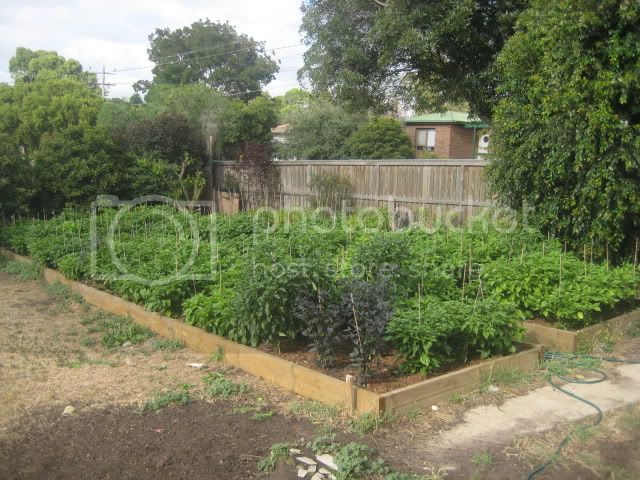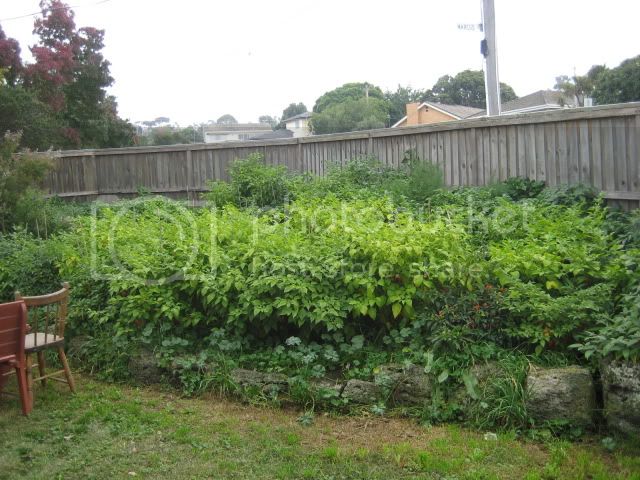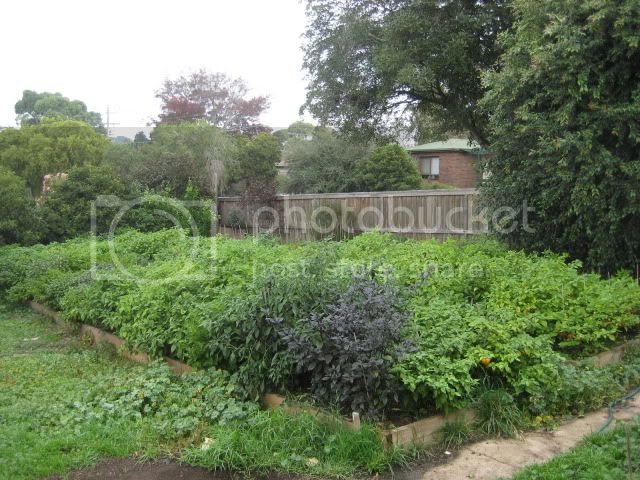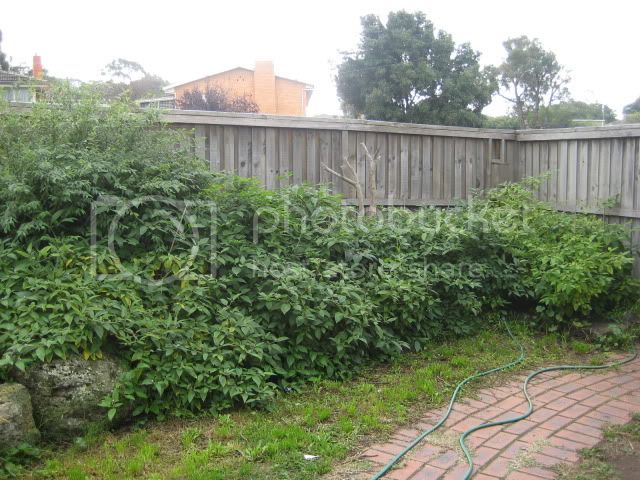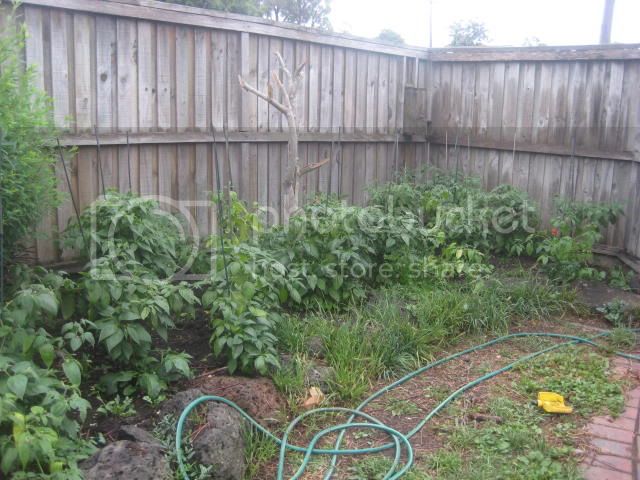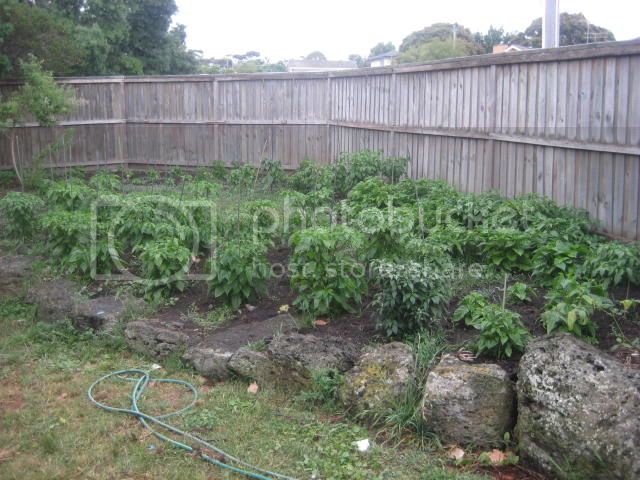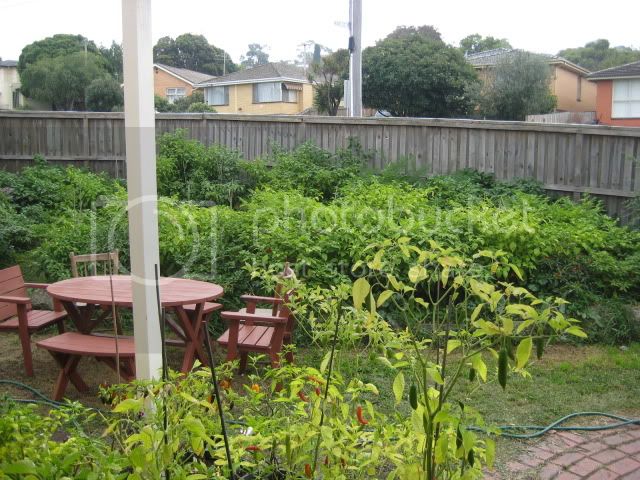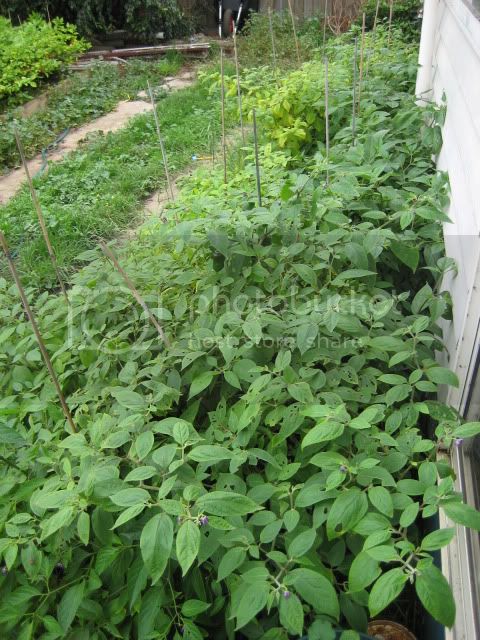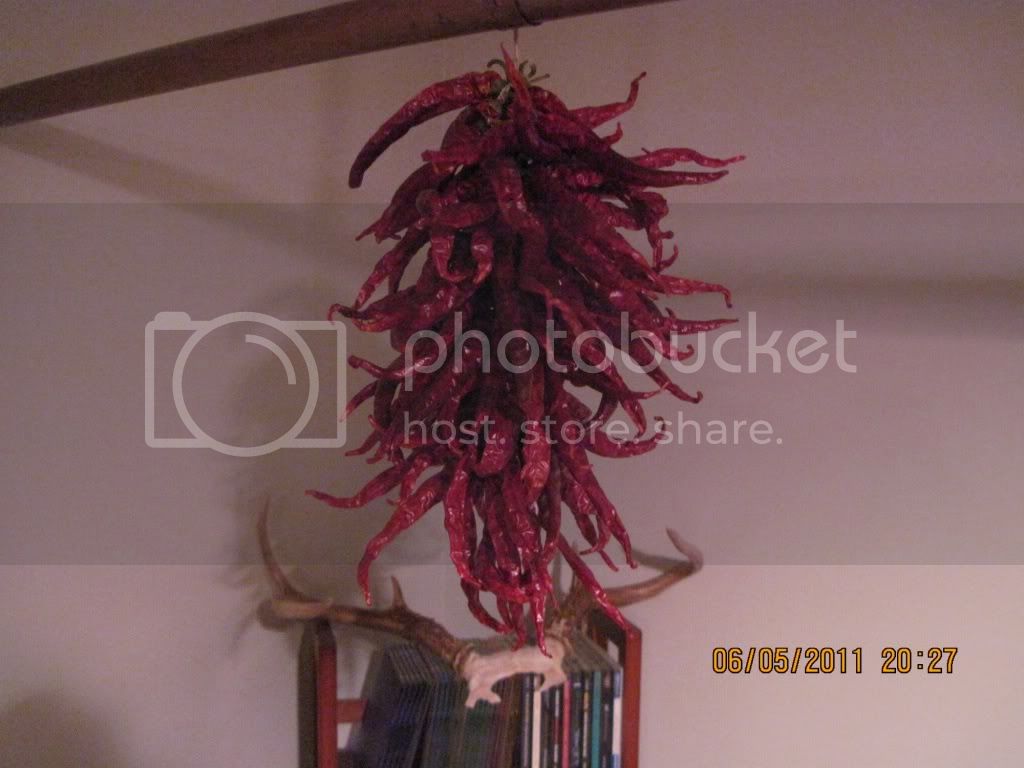Why does clumping work?
Here's how I see it;
In the middle of summer where temperatures can get quite high here in Australia (in excess of 40`Celsius)
The temperature under the leaves (leaf canopy) of crops like the pepper plant can usually be around 15 degrees Celsius below ambient,
(creating a greenhouse effect) and this could also protect the plants from colder weather as well by keeping in the heat under the canopy
thus having the same effect.... this could acheive a more balanced microclimate . This would be more helpful by reducing the heat stress,
which means when the weather is much hotter the plants don't have to close up their Stomata
(minute epidermal pores in a leaf or stem through which gases and water vapor can pass letting in the CO2 and letting out the O2 during the day).
when the Stomata close up, it results in the gas exchanges slowing down and thus resulting in less CO2 being absorbed by the plants, i.e. less "body building".
Also enabling less water transference i.e. the plant's Capillary action
(less nutrients being drawn up from soil and less nutrients being absorbed via the roots and also from the leaves via the atmosphere).
Another bonus from having a canopy, brings into play the fight for sunlight. (causing the plants to grow alot bigger/faster so as to compete for the sunlight).
By having a canopy would really help with the prevention of drying out of the upper layer of soil. A growing trait that chillies are very sensitive to.
Growing in this way could explain why a pepper jungle can handle more extreme heat and should also result in a real ecosystem
happening, with lots of beneficial insects
(lady bugs, wasps, spiders and even bees) thriving in this type of garden environment with virtually no pests destroying the plants.
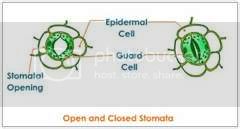
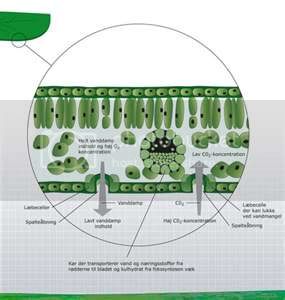
Here's how I see it;
In the middle of summer where temperatures can get quite high here in Australia (in excess of 40`Celsius)
The temperature under the leaves (leaf canopy) of crops like the pepper plant can usually be around 15 degrees Celsius below ambient,
(creating a greenhouse effect) and this could also protect the plants from colder weather as well by keeping in the heat under the canopy
thus having the same effect.... this could acheive a more balanced microclimate . This would be more helpful by reducing the heat stress,
which means when the weather is much hotter the plants don't have to close up their Stomata
(minute epidermal pores in a leaf or stem through which gases and water vapor can pass letting in the CO2 and letting out the O2 during the day).
when the Stomata close up, it results in the gas exchanges slowing down and thus resulting in less CO2 being absorbed by the plants, i.e. less "body building".
Also enabling less water transference i.e. the plant's Capillary action
(less nutrients being drawn up from soil and less nutrients being absorbed via the roots and also from the leaves via the atmosphere).
Another bonus from having a canopy, brings into play the fight for sunlight. (causing the plants to grow alot bigger/faster so as to compete for the sunlight).
By having a canopy would really help with the prevention of drying out of the upper layer of soil. A growing trait that chillies are very sensitive to.
Growing in this way could explain why a pepper jungle can handle more extreme heat and should also result in a real ecosystem
happening, with lots of beneficial insects
(lady bugs, wasps, spiders and even bees) thriving in this type of garden environment with virtually no pests destroying the plants.




